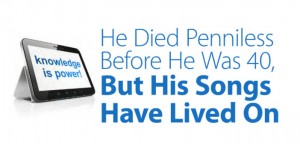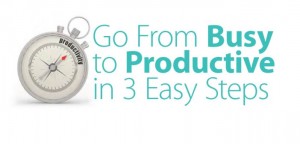There’s a book on my shelf that I’ve owned for at least 35 years now, and it has seen better days… the spine is faded, the cover is stained, and its pages are yellowed.
I’ve lost track of how many times I’ve read it, but I still get choked up… tears in my eyes… when I read the last sentence:
“My troubles are all over, and I am at home; and often before I am quite awake, I fancy I am still in the orchard at Birtwick, standing with my old friends under the apple trees.”
Do you know the book? It’s Black Beauty, by Anna Sewell.
Words give us writers the awesome power to touch, inform, motivate, and persuade.
And when we tap into that power as copywriters, we can accomplish great things.
So, I’m going to share with you the absolute easiest way to write compelling and engaging copy…
Ready?
Here it is — tell a story.
That’s it! It’s so simple that any child could do it… and you can, too!
I’m going to give you the “how to” of a good story, which translates into how to write compelling copy.
But first, let’s talk about the “why”…
Why are stories so powerful?
Psychological and neurological research has suggested that humans think in a narrative structure.
This is why you hear that we are “hardwired to respond to stories” or that “stories are in our DNA.”
We respond so well to stories because, as narratives, stories match our basic thought patterns. It’s as simple as that!
Stories help us make sense of the world, and they help your reader relate to your message, too.
But stories — good ones — also elicit an emotional response.
Consider that most people buy from emotion and then justify their purchase with logic. Stories are so powerful because they are both emotional and logical.
For example, let’s look at some copy written for two pool service companies. The target market is homeowners who have a pool, and the goal is to get those homeowners to hire the pool service to maintain that pool.
Company A is proud of the high level of service they provide. Their basic weekly service includes 10 maintenance tasks (including skimming the surface of the water, checking the equipment, testing the chemical balance, and so on). They also offer about 20 optional services upon request.
Company A presents these services in a bulleted list, under a photo of a beautiful pool, and asks their prospect to “Call us today!”
Company B, on the other hand, provides the same services but takes a different approach …
Company B features a picture of a happy family splashing around in a sparkling pool. Their copy tells the story of Customer John coming home from work and enjoying pool time with his family. John doesn’t have to clean his pool after work or on the weekend before his family can spend time together. Since he has hired Company B to maintain it for him, John can simply jump right in and relax with quality family time.
Company B weaves their services and benefits into an emotional story that engages the prospect and shows him how he will enjoy those benefits.
Of course, this example was over-simplified to make a point… but… which copy is more effective at painting a picture of the benefits? Which one is more compelling?
A good story works well because it combines narrative thought with emotional wants/needs/desires. And that is a powerful combination!
So how do we writers tap into this power? After all, we write sales and marketing copy, not creative fiction…
How to write a compelling story
There really are just 4 basic elements to a story:
- The character — someone the reader is going to relate to
- The problem — what needs to be fixed or changed
- The solution — the products or services he used to solve the problem
- The ending — how his life has changed/improved as a result of using those products or services
As writers, our job is to infuse each of these elements with enough emotion to engage our readers and make them care about the outcome.
Our job is also to get the reader emotional enough to take action!
So how do we do that? It’s all in the details…
Let’s look at the bare bones of a story: Jane (character) needs to lose 50 pounds (problem), so she goes on ABC Diet Plan (solution), and loses 60 pounds (ending).
Now let’s add details to elicit some emotion:
Jane needs to lose 50 pounds… Why? She needs to relieve the stress the extra weight places on her joints, and she wants to have more energy to play with her kids… Why? She wants to be a better mom.
So, she goes on the ABC Diet Plan and loses 60 pounds… So what? So now she’s more comfortable being active, and she has more energy to play with her kids… So what? So she’s able to spend more quality time with them, and she’s a better mom.
You can get to the emotional details that readers will respond to by asking yourself “Why?” and “So what?” over and over again until you get down to the most basic — and most powerful — answers.
You can do this for any type of writing project!
Case studies are the epitome of using success stories to promote a company’s product or service. And compelling emails also rely heavily on telling a good story.
But stories truly make any copy — sales pages, landing pages, social media content, blogs, e-newsletters, and articles — stronger and more compelling.
You don’t necessarily have to include a complete beginning-to-end story in every project. And you don’t need to tell the story in a “once upon a time… happily ever after” format, either.
Sometimes the story is simply a theme that ties everything together.
The story helps the reader make sense of your message. The story engages the reader’s emotions and creates a connection to your customer’s product or service.
So, can you tell a story?
Of course you can! You’ve had a lifetime of experience with them…
And this is the key for knowing how to write compelling copy.
Just practice using the logical and emotional sides of your brain together by looking for stories in your everyday routines, by creating stories about the products you buy, and by reflecting on the stories that move you most.
Soon, you’ll become a natural at tapping into the power of stories.
Your copy will become so compelling and effective that your clients will keep coming back for more.
And your own success story will have more and more chapters!






